Complete Solutions to Illustration of chapter KINEMATICS-1 of Class 11 book with complete answers and questions
| Class 11 | PHYSICS |
| Chapter | KINEMATICS-1 |
| CENGAGE PHYSICS | Illustration |
| Number Of Questions | 57 |
| Academic Year | 2023-24 |
A particle moves in the the `x-y` Plane according to the scheme `x-8 sin pit`, where `t` is time. Find equation to the path of the particle. Show the path on a graph.
View SolutionA particle move in `x-y` plane such that its position vector varies with time as `vec r=(2 sin 3t)hat j+2 (1-cos 3 t) hat j`. Find the equation of the trajectory of the particle.
View SolutionA particle moves from position `A` to position `B` in a path as shown in If the poit vectors `vec r_(1)` and `vec r_(2)` making an angle `theta` between them are give, find the magnitude of displacement.
 .
.
View SolutionA particle move in a semicircular of radius `R` from `O` to `A` . Then it moves parallel to z-axis covering distance `R` upto `B`. Finally it moves along `BC` parallel to y-axis throuth a distance `2R`. Find the ratio of `D//s`.
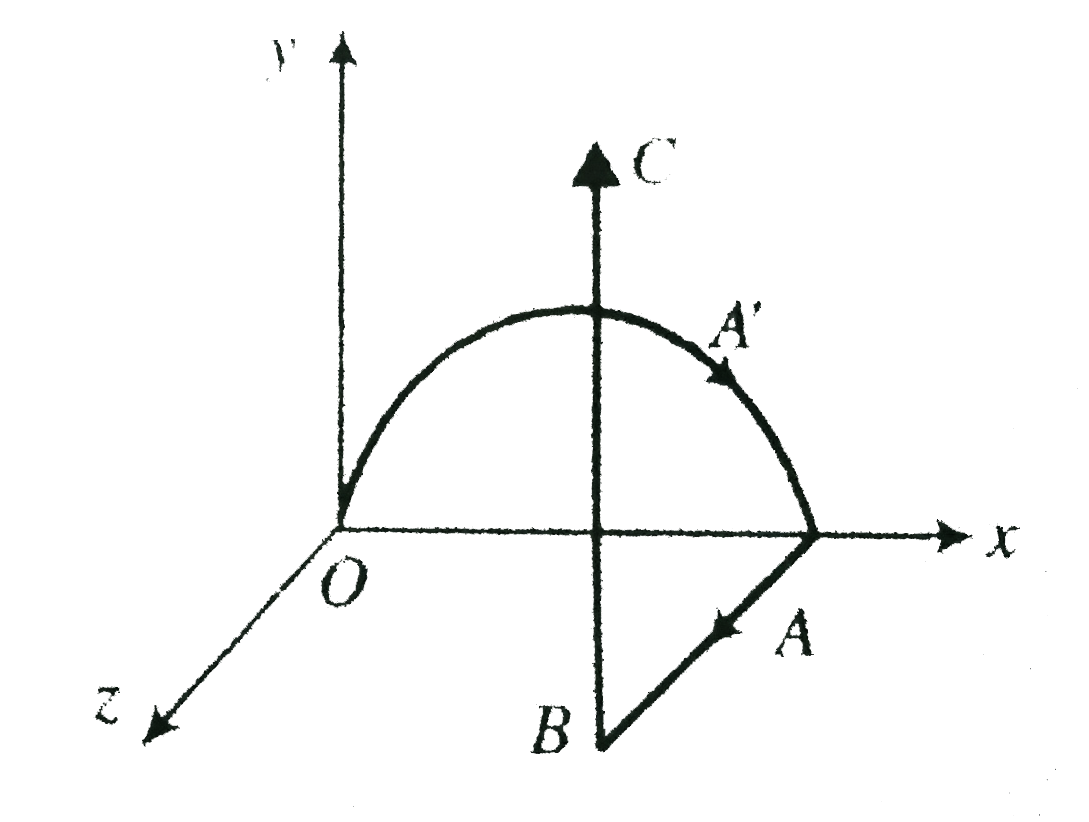 .
.
View SolutionA particle is moving in a circle of radius `R`.
a. What is its displacement when it covers (i) half the circle, (ii) full circle?
b. What is its distance when it comers (i) half the the circle and (ii) full circle ?.
 .
.
View SolutionA teain tramels from city `A` to city `B` with constant speed of `10 m s^(-1)` and returns back to city `A` with a constant spiid of `20 m s^(-1)`. Finde its average speed during its entire journey.
View SolutionA man traversed half the distance with a velocity `v_(0)`. The remaining part of the distance was covered with velocity `V^(1)`. For half the time and with velocity `v_(2)` for the other half of the time . Find the average speed of the man over the whole time of motion.
 .
.
View SolutionA particle moves along the curve `(x^(2))/(9) +(y^(2))/(4) =1`, with constant speed `v`. Express its "velocity vectorially" as a function of `x,y`.
View SolutionA particle move so that its position verctor varies with time as `vec r=A cos omega t hat i + A sin omega t hat j`. Find the
a. initial velocity of the particle,
b. angle between the position vector and velocity of the particle at any time, and
c. speed at any instant.
View SolutionA particle describes an angle `theta` in a circular path with a constant speed `v`. Find the `a` charge in the velocity of the particle and `b` average acceleration of the particle during the motion in the curve (circle).
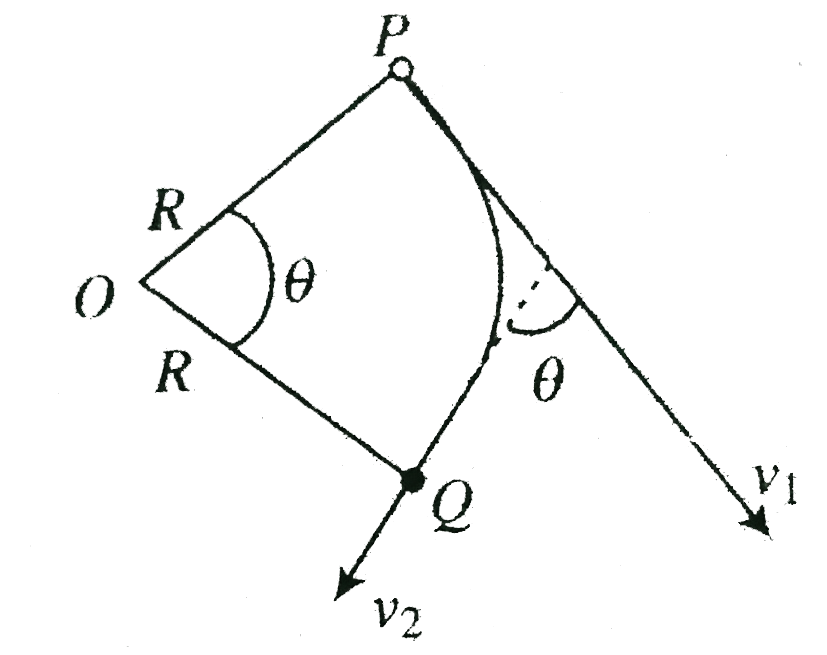 .
.
View SolutionA particle starts moving rectilinearly at time `t=0` such that its velocity `v` changes with time `t` according to the equation `v=t^(2)-t`, where `t` is in seconds and `v` in ` s^(-1)`. Find the time interval for which the particle retards.
View SolutionThe position of a particle moving along x-axis is related to time `t` as follow: `x=2 t^(2)-t^(3)`, where `x` is in meters and `t` is in seconds.
a. What is the maximum positive displacement of the particle along the `x` axis and at what instant does it attain it?
b. Describe the motion of the particle.
c. What is the destamce covered in the first three seconds?
d. What is its desplacement in the first four seconds ?
e. What is the particle`s average speed and average veloctry in the first `3` seconds ?
f. What particles instantaneous acceleration at the instant of its maximum positiv `x` displacement? ltbtgt g. What is the average acceleration between the interval `t=2` to `t=4 s`?.
View SolutionA particle moving with uniform acceleration from `A` to `B` along a straight line has velcities `v_(1)` and `v_(2)` at `A` and `B` respectively. If `C` is the mid-point between `A` and `B` then determine the velocity of the particle at `C` .
 .
.
View SolutionTwo trains `P` and `Q` are moving along parallel tracks same uniform speed of `20` m `s^(-1)`. The driver of train `P` decides to overtake train `Q` and accelerate his train by `1 ms^(-2)`, After `50 s`, train `P` crosses the engine of train `Q`. Find out what was the distance between the two trains initially. provided the length each is `400 m`.
View SolutionConsider a particle intially moving with a velocity of `5` m `s^(-1)` starts decelerating at a constant rate of `2` m `s^(-2)`.
a. Determine the time at which the particle becomes stationary.
b. Find the distance travelled in the second second.
c. Find the distance travelled in the third second.
View SolutionIn a car race, `A` takes a time of `t` s, less than car `B` at the finish and passes the finishin point with a velocity `v` more than car `B`. Assuming that the cars stat from rest and travel with constant accelerations `a_(1)` and `a_(2)`. Respectively, show that `vsqrt(a_(1) a_(2)t)`.
View SolutionA particle is projected up with initial speed `u=10 m s^(-1)` from the top of a building at time `t=0`. At time `t=5 s` the particle strikes the ground. Find the height of the building in meter.
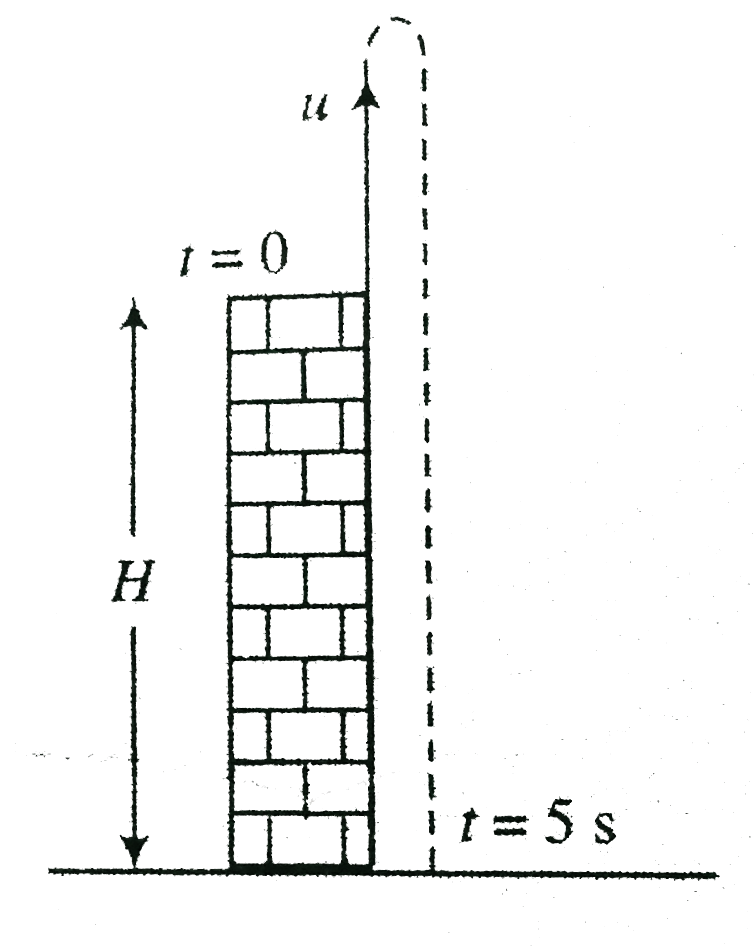 .
.
View SolutionA particle is parojected vertically upwards from grund with initial velocity `u`.
a. Find the maximum height `H` the particle will attain and time `T` that it will attain and time `T` that it will take to return to the ground .
 .
.
b. What is the velocity when the particle returns to the ground?
c. What is the displacement and distance travelled by the particle during this time of whole motion.
View SolutionA ball is projected vertically up such that it passes thorugh a fixes point after a time `t_(0)` and `t_(2)` respectively. Find
a. The height at which the point is located with respect to the point of projeciton
b. The speed of projection of the ball.
c. The velocity the ball at the time of passing through point `P`.
d. (i) The maximum height reached by the balll relative to the point of projection `A` (ii) maximum height reached by the ball relative to point `P` under consideration.
e. The average speed and average velocity of the ball during the motion from `A` to `P` for the time `t_(1)` and `t_(2)` respectively.
 .
.
View SolutionTwo paarticles `1` and `2` are projected simultaneusly with velocities `v_(1)` and `v_(2)`, respectively. Particle `1` is projectected vertically up from the top of a cliff of heitht `h` and particle `2` is projected vertically up from the bottom of the cliff. If the bodies meet (a) above the top of the cliff, (b) between the top and bottom of the the cliff, and (c ) below the bottom of the cliff, find the time of meeting of the particles.
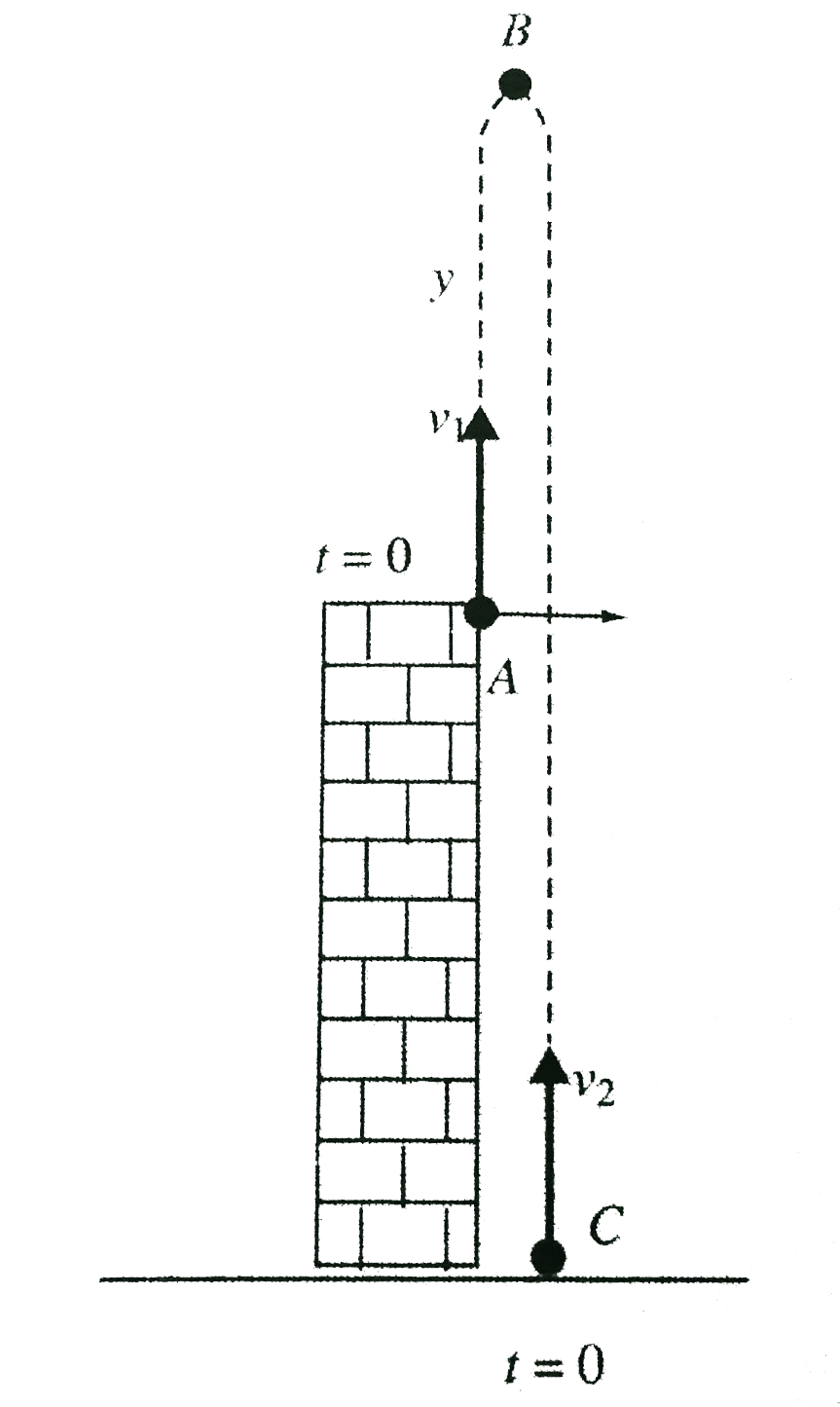 .
.
View SolutionA body is thrown vertically upwards from `A`. The top of a tower . It reaches the fround in time `t_(1)`. It it is thrown verically downwards from `A` with the same speed it reaches the ground in time `t_(2)`, If it is allowed to fall freely from `A`. then the time it takes to reach the ground.
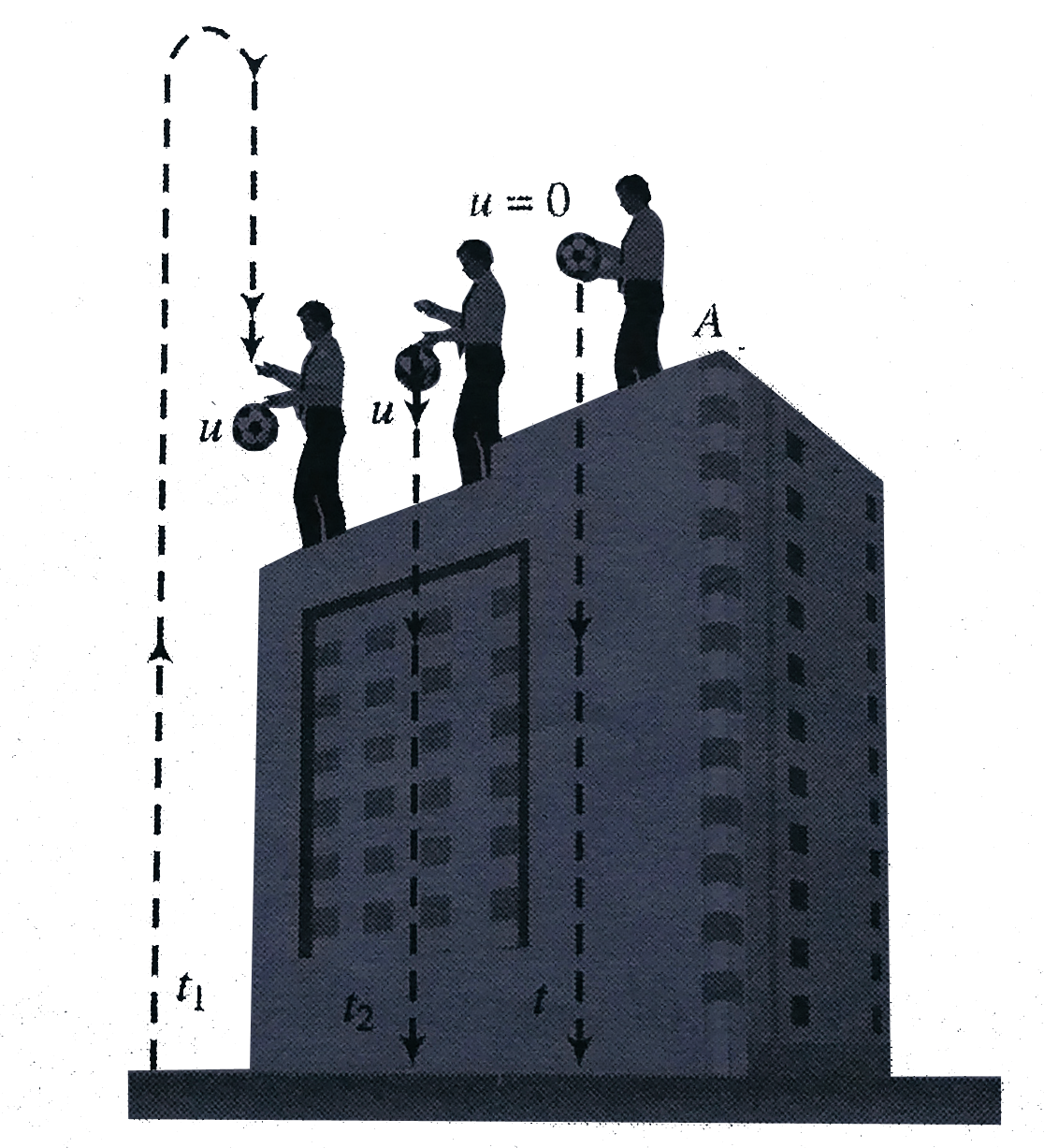 .
.
View SolutionA body is projected upwards with a velocity `u`. It passes through a certain point above the grond after `t_(1)`, Find the time after which the body posses thoruth the same point during the journey.
View SolutionFrom a point `A, 80 m` above the ground, a particle is projected vertically upwards with a velocity of `29 .4. m s^(-1)`, Five seconds later, another particle is dropped from a point `B, 34. 3 m` vertically below `A` Derermine when and where one voertakes the other. Take `g=9.8 m s^(-2)`.
View SolutionA balloon starts rising upwards with constant acceleration a and afrer time `t_(0)`, second, a packet is dropped from it which reaches the ground aftre t seconds of dropping . Derermine the value of `t`
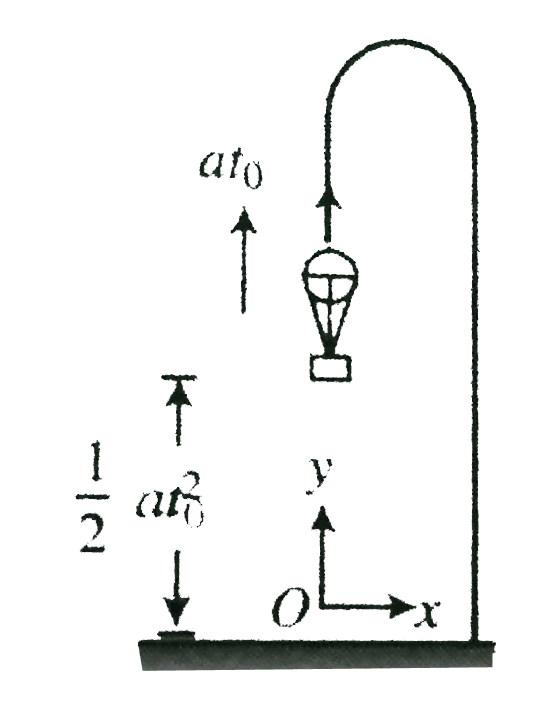 .
.
View Solution(a) Show that the velocity acquired by a particle in sliding down an inclined plane is the same as that acquired by a particle falling freely from frst though a distance equal to the height of the inclined plane. (b) Find the time taken in sliding a particle down the whole length of the incline.
View SolutionBall `1` is released from the top of a smooth inclined plane, the at the same instant ball `2` is projected from the foot of the plance with such a velocity that they meet halfway up the incline. Determine:
a.the velocity with which balls are projected and
b. the velocity of each ball when they meet.
 .
.
View SolutionA car `A` moves with velocit `20 m s^(-1)` and car `B` with velocity `15 m s^(-1)` as shown is. Find the relativety B` w.r.t. `A` w.r.t. `B`.
 .
.
View SolutionA car `A` moves with velocity `15 m s^(-1)` and `B` with velocity `20 m s^(-1)` are moving in opposite directions as shown in . Find the relative velocity of `B` w.r.t. `A` and w.r.t. `B`.
 .
.
View SolutionA bird flies to and fro between two cars wich move with velocities `v_(1)` and `v_(2)`, If the speed of the bird is `v_(3)` and the initial distance ofseparation between then is `d`, find the total distance covered bythe bird till the cars meet.
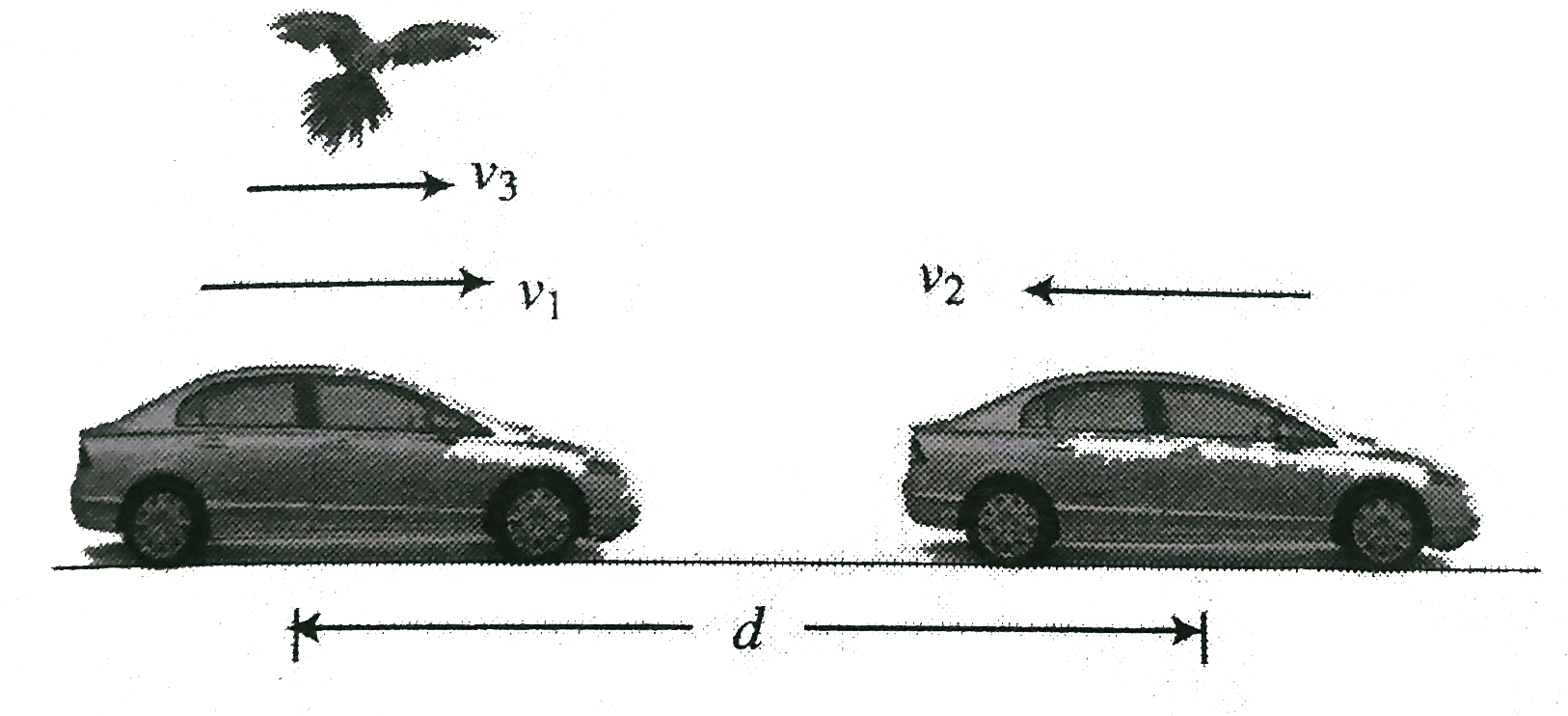 .
.
View SolutionA person walks up a stationary escalator in `t_(1)` second. If he remains stationary on the escalator. Then it can take him up in `t_(2)` swcond. If the length of the escalator is `L`, then
a. Determine the speed of man with with respect to the escalator. b. Derermine the speed of the escalator.
How much time would take him to walk up the moving escaltor?.
View SolutionSuppose you are reding a bike with a speed of `10 m s^(-1)` due relative to a person `A` person `A` who is walking on the ground towards east. If your friend `B` walking on the ground due west measures you speed as `15 m s^(-1)`, find the relative velocitur between two refence frames `A` and `B`.
View SolutionTwo paarallel rail tracks run north-south Train `A` moves north with a speed of `54 km h^(-1)` and train `B` moves south with a speed of `90 km h^(-1)`. What is the
a. relative velocity of `B` with respect to `A`?
b. relaity of a monkey running on the roof of the train `A` against its motion (with its velocity of `18 km h^(1)` with respect ot the train `A` ) as observed by a man standing on the fround?
View SolutionTwo towns `A` and `B` are connected by a regular bus service with a bus leaving in either direction every `T` min `A` man cycling with a speed of `20 km h^(-1)` in the direction `A` to `B` notices that a bus goes past him every `18 min` in the direction of his motion, and every `6 min` in the opposite direction. What is the period `T` of the bus service and with what speed (assumed constant )do the buses ply on the road?
View SolutionA police van moving on a highway with a speed of `30 km h^(-1)` Fires a bullet at a thief's car speeding away in a same direction with a speed of `192 km h^(-1)`. If the muzzle speed of the buller is `150 m s^(-1)`, with what speed does the bullet hit thief's car? .
 .
.
View SolutionOn a two lane road, car `A` is travelling with a speed of `36 km h^(-1)`, Two cars `B and C` approach car `A` in opposite directions with a speed of `34 km h^(-1)`. At a certain instant, when the distance `AB` is equal to `AC`, both `1` km `B` decided to overtake `A` before `C` does. What minimum acceleration of car `B` is required to avoid and accident?.
View SolutionA car travelling ast 60 km/h overtakes another car travellign at 42 km/h. Assuming each car to be 5.0 m long, find the time taken during the overtake aned the total road distance used for the overtake.
View SolutionTwo particles `A` and `B` are thown vertically upward with velocity, vertically upward with velocity, `5 m s^(-1)` and `10 m s^(-1)` respectively (g=10 m s^(-2)), Find separation between them after `1 s`.
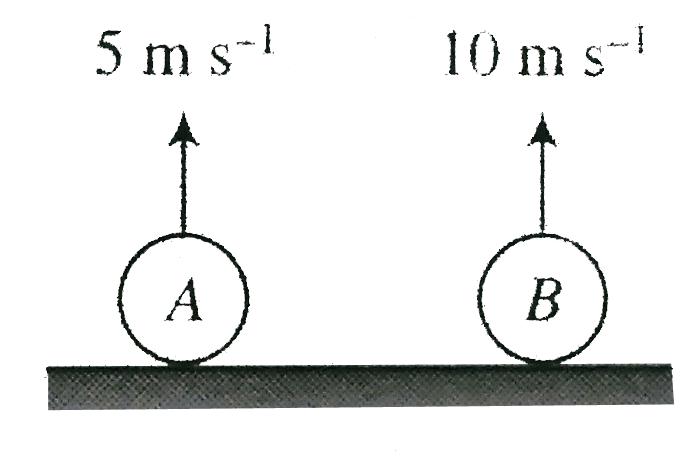 .
.
View SolutionA ball is thrown downwards with a speed of `20 m s^(-1)`, from the top of a buling `150 m` high and simultane-ously another ball is throun vertically upwrds wuth a speed of `30 m s^(-1)` from the foot ot the building . Find the time after wguch both the balls will meet. (g=10 m s^(-2))
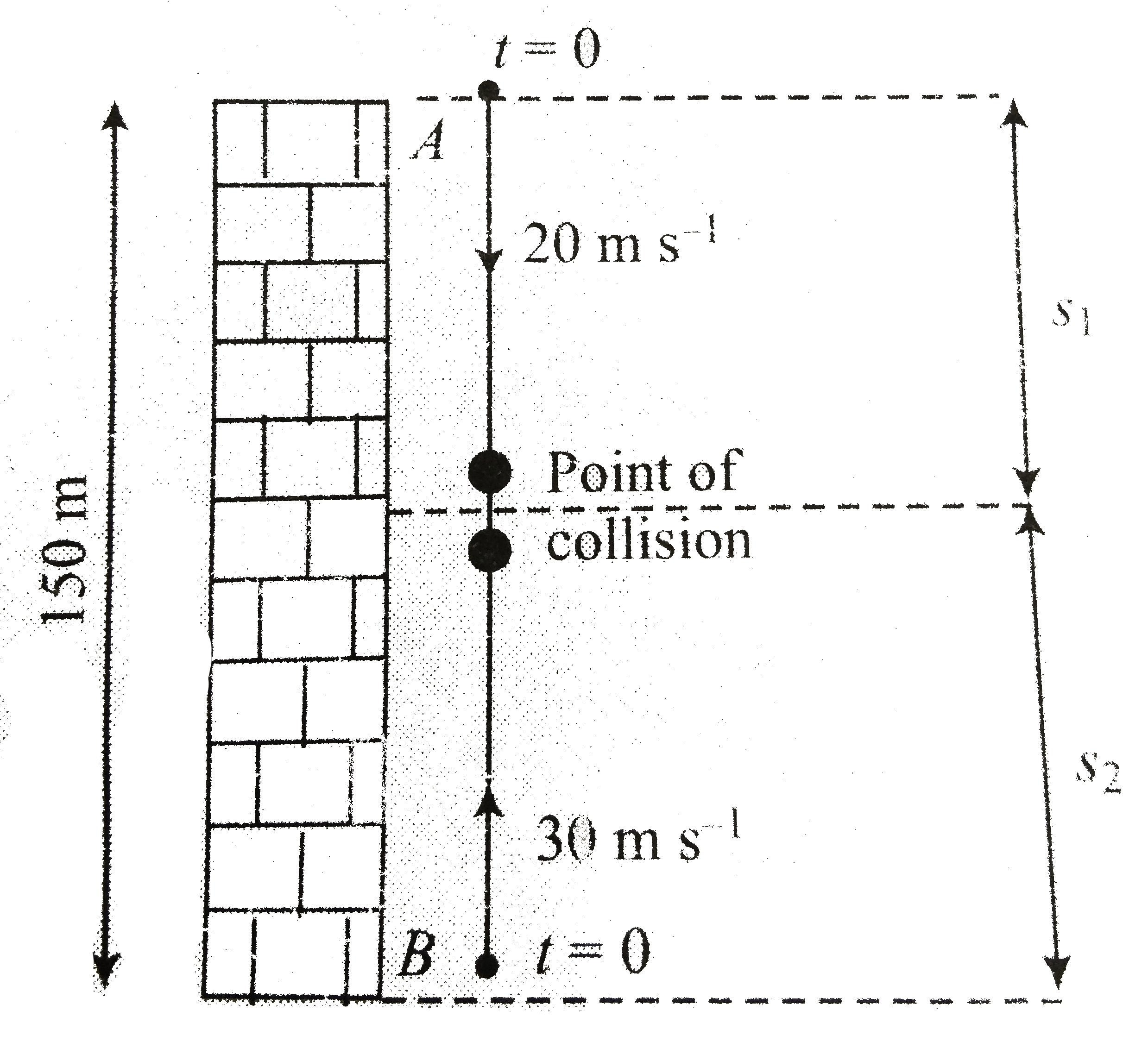 .
.
View SolutionAn elevator is moving with an upward acceleration `a, A` coin is dropped from rest from the roof of the elevator, frlative to you. After what time the coin will strike the base of the elevator?
View SolutionTwo cars `1` and `2` move with velocities `v_(1)` and `v_(2)`, respectively, on a straight road in same direction When the crs are separated by a destance `d` the driver of car `1` applies brakes and the car moves with uniform retardation `a_(1)`, Simultaneously, car `2` starts accelerating with `a_(2)`, If `v_(1) lt v_(2)`, find the minimum initial separation between the cars to avoid collision between then.
View SolutionA swimmer capable of swimming with velocity `v` relative to water jumps in a flowing friver having velocity `u`. The man swims a distance `d` down stream and returns back to the priginal position. Find out the time taken in complete motion.
View SolutionA boat is moving with a velocity `v_(bw)=5 km//hr` relative to water. At time `t=0`.the boat passes through a piece of cork floating in water while moving down stream.If it turns back at time `t_(1)=30 min`.
a) when the boat meet the cork again?
b) The distance travelled by the boat during this time.
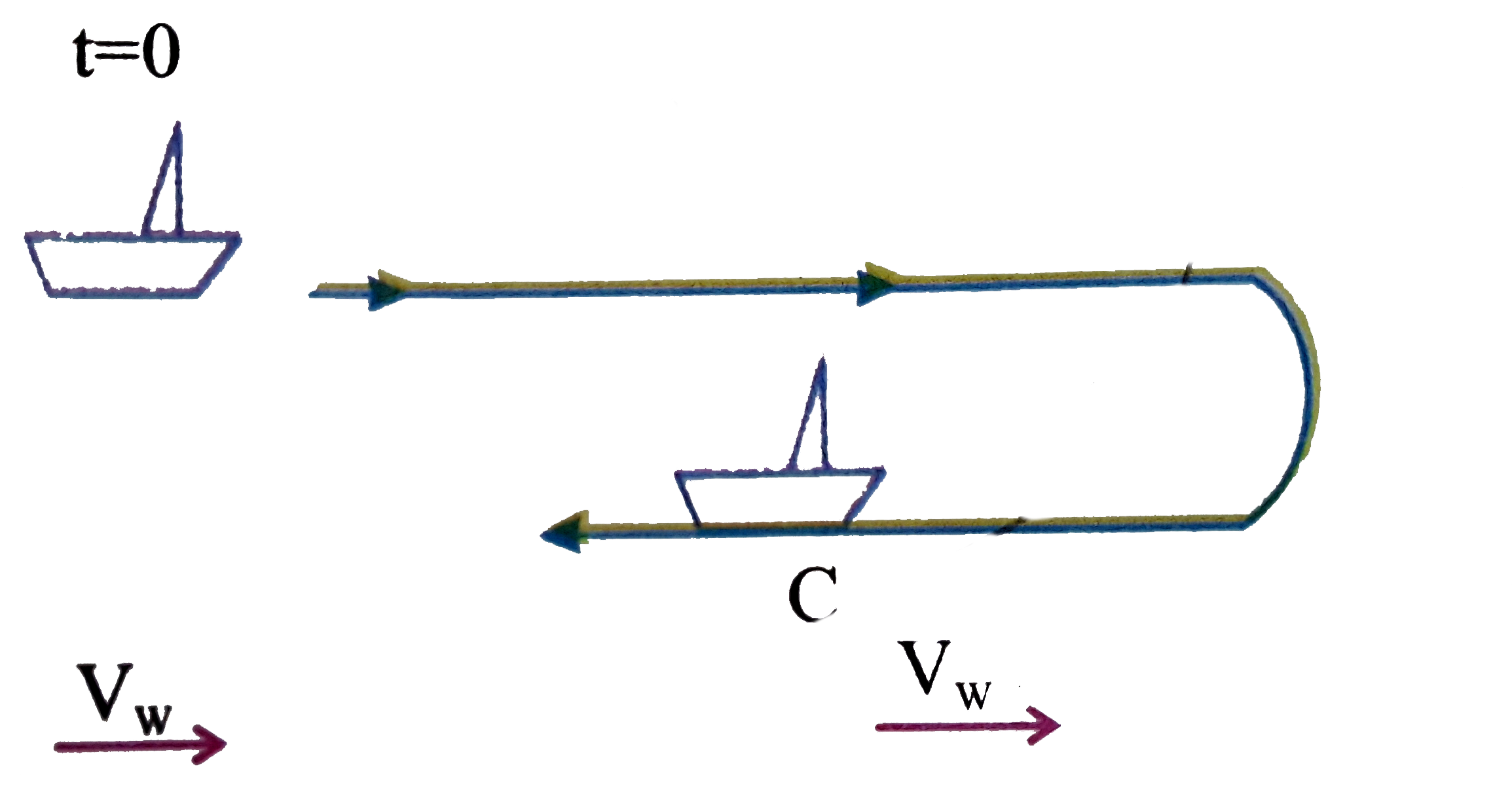
View SolutionThe position verus time graph time graph for a certain particle moving along the x-axis is shown in . Find the average velocity in the time intervals (a) `0` to `2s,` (b) `2 s` to `4 s`, and (c) `4,s` to `7 s`,
 .
.
View SolutionThe position-time (x-t) graphs for two children `A` and `B` returning from their school `O` to their homes `P` and `Q`, respectively, are shown in . Choose the
 .
.
a.` (A//B)` Iives closer to school than `(B//A)`.
b. `(A//B)` starts from the school earlier than `(B//A)`.
c. `(A//B)` walks faster than `(B//A)`.
d. `A` and `B` reach home at the (same//differnt) time.
e. (A//B) overtakes on the road (once//twice).
View SolutionThe velocity time curve of a moving point is shown in Fig. Find the retardation of the particle for the porion `CD`.
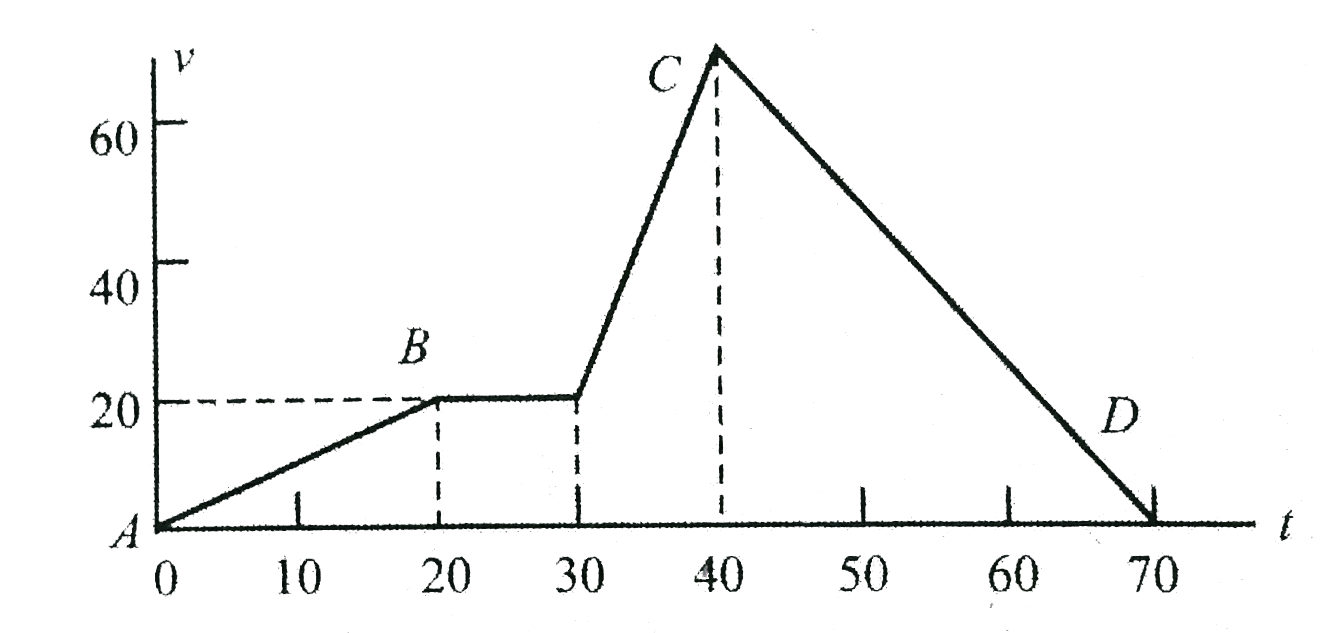 .
.
View SolutionAs soon as a car just starts from rest in a certain dercation, a scooter moveing with a uniform speed overtakes the car. Their velocity-time graph is shown in . Calculate
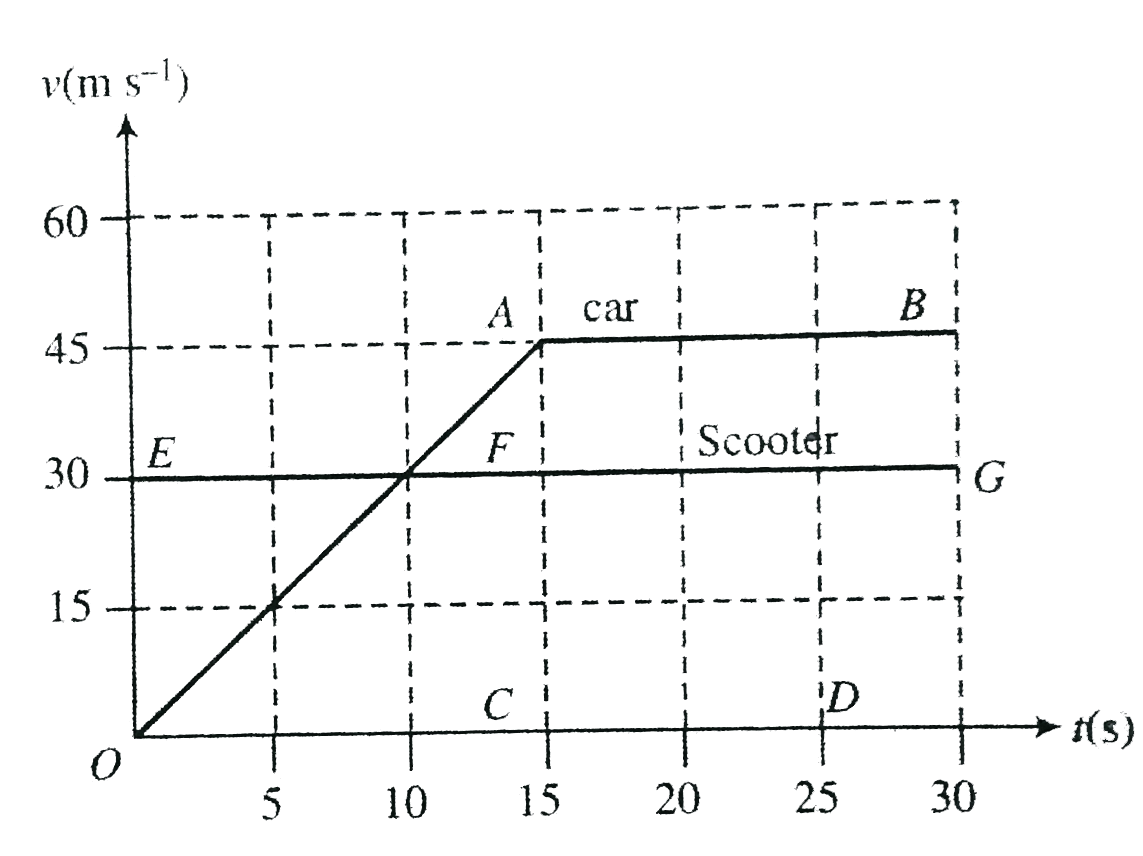 .
.
a. The difference between the distances travlled by the car and the scooter in `15 s`,
b. Find the time at which the car passes the scooter and the distance of car and scooter from the starting point at that instant.
View SolutionThe velocity-time graph of a bosy moving along a straight line is given bellow dind:
Average velocity in whole time of motion
(b) Average speed in whole time of motion
(c ) Draw acceleration vs time graph.
 .
.
View SolutionA particle moves aling x-axis with an initial speed `v_(0)=5 m s^(-1)`. If its acceleration varies with with time asshown in `a-t` graph in .
 .
.
a. Find the .
View SolutionConsiedr the following `x-t` garaph to be parabolic. Draw the velocity-time graph and acceleration-time graph analyze the motion of the particle regarding its velocity and acceleration.
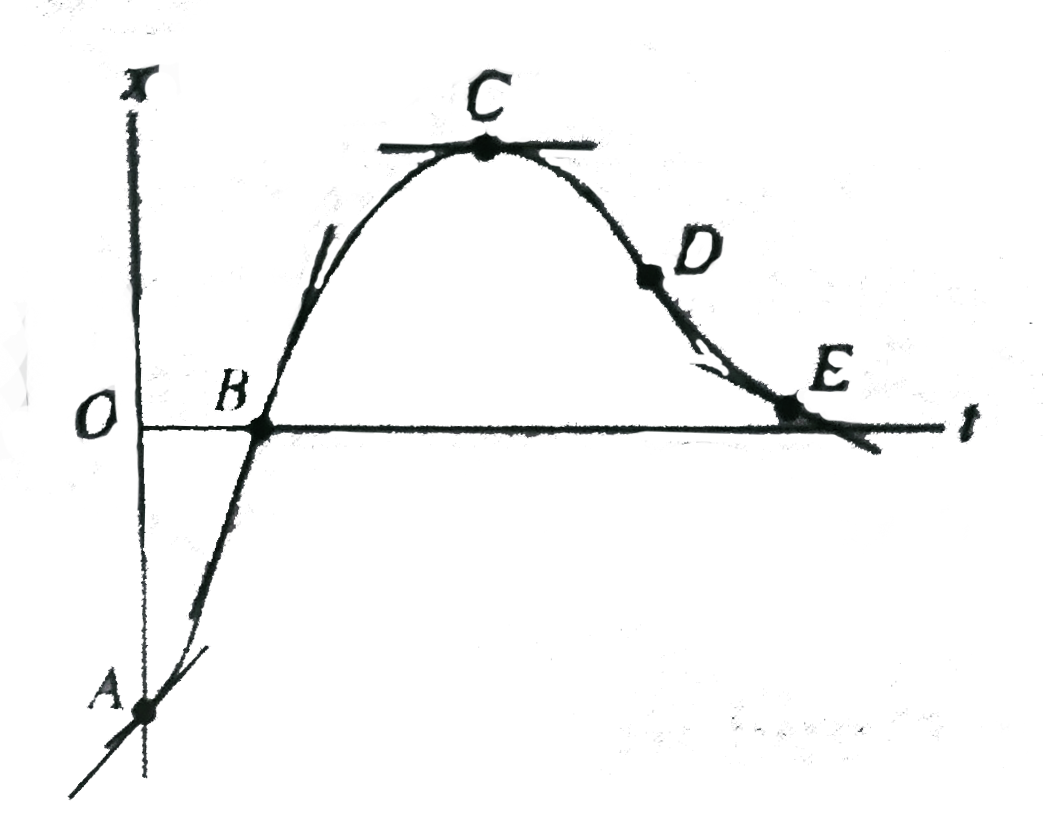 .
.
View SolutionFigure is a graph of the coordinate of a spider crawling along the x-axis. (a) Fraph tis velocity and acceleration as functionsof time. (b) In a motion diagram, show the position, velocity, and acceleration of the spider at the five times: `t=2.5 s`, t=10 s, t=20 s, t=30 s`,
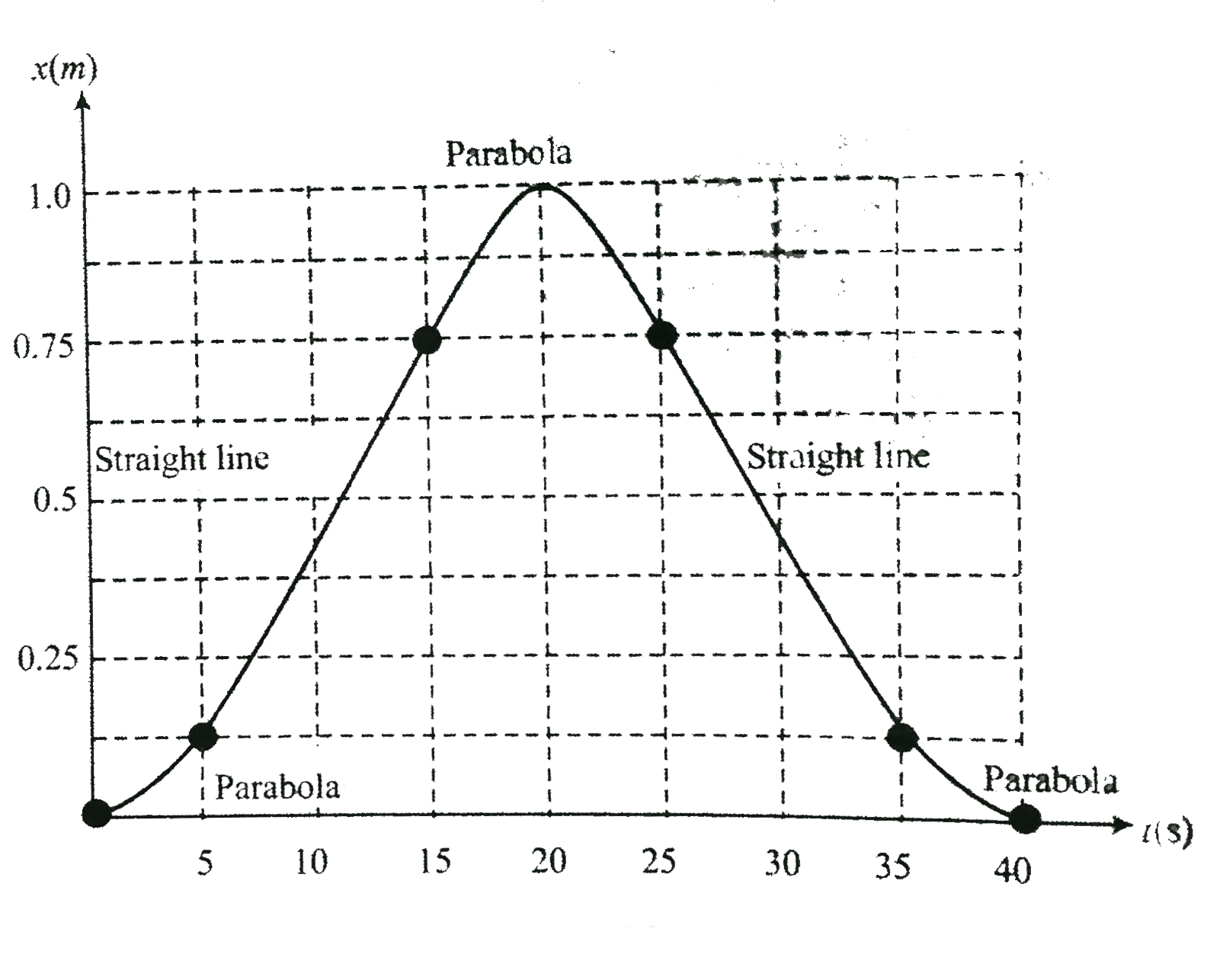 .
.
View SolutionA car starts moving rectilinearly first with acceleration `alpha=5 m s^(-2)` (the initial velocity is equal to zero), then uniformly, and finally, deceleration at the same rate `alpha` comea to a stop. The time of motion equals `t=25 s`. The average velocity during this time is equal to `
`=72 km h^(-1)` How long does the car move unitromly?
View SolutionA hot-air balloonist, rising vertically with a constant velocity of magnitude `20 m s^(-1)`, releases a sandbag at an instant when the balloon is `25 m` above the ground . Afere it is released, the sandbag is in free fall. Skerch `a_(y)-t, v_(y)-t`, and `y-t` graphs for motion, taking origin at ground.
 .
.
View SolutionAt the height of `75 m`, a particle `A` is thrown up with `V=10 m s^(-1)` and `B` particle is thorwn down with `V=10 m s^(-1)` and `C` particle released with `V=0 m S^(-1)`. Draw graphs of each particle.
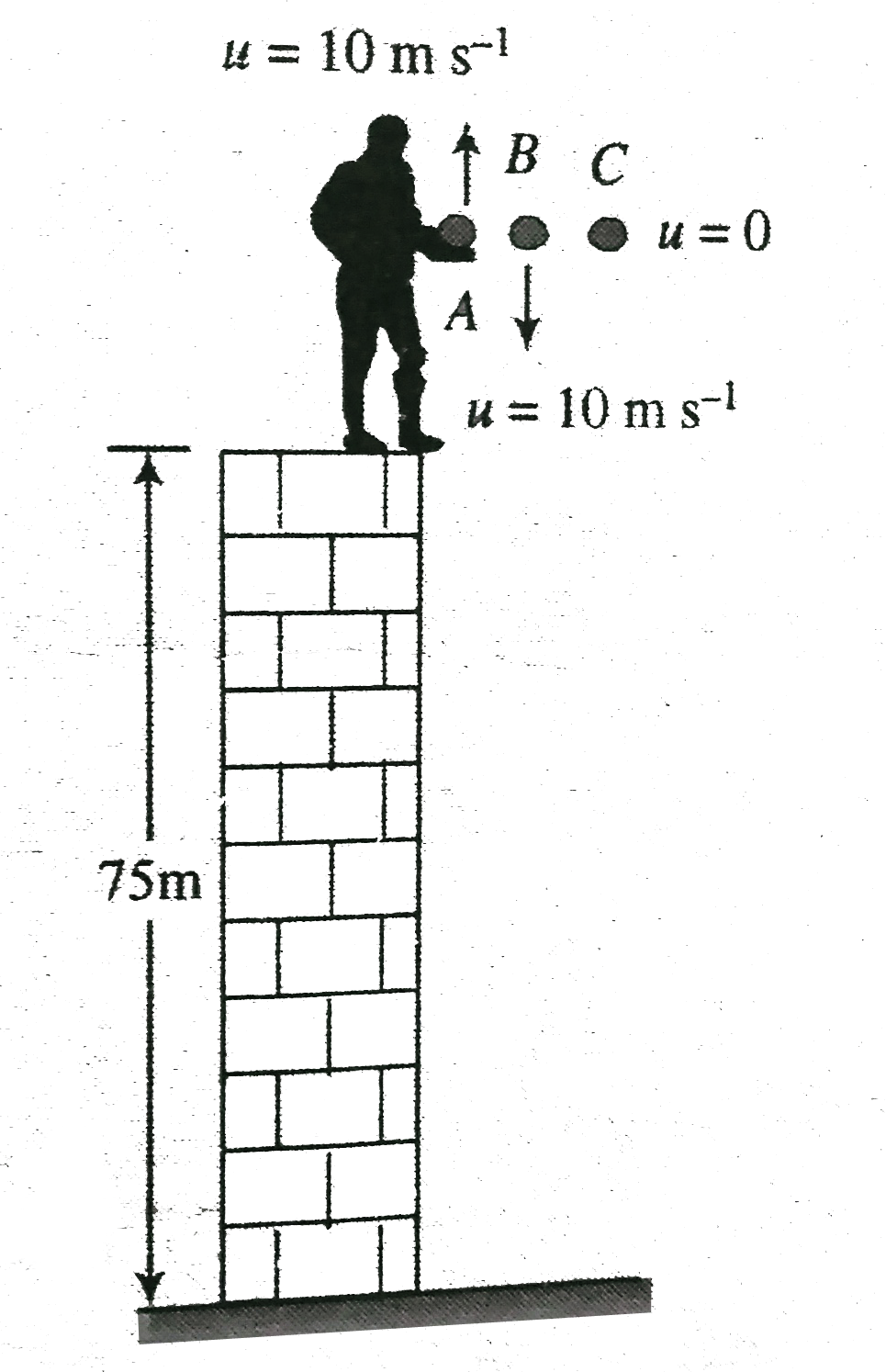 .
.
a. Displacement-time`
b. Speed-time
c. Velocity-time
d. Acceleration-time.
View SolutionThe `v-s` and `v^(2)-s` graph are given for two particles. Find the accelerations of the particles at `s=0`.
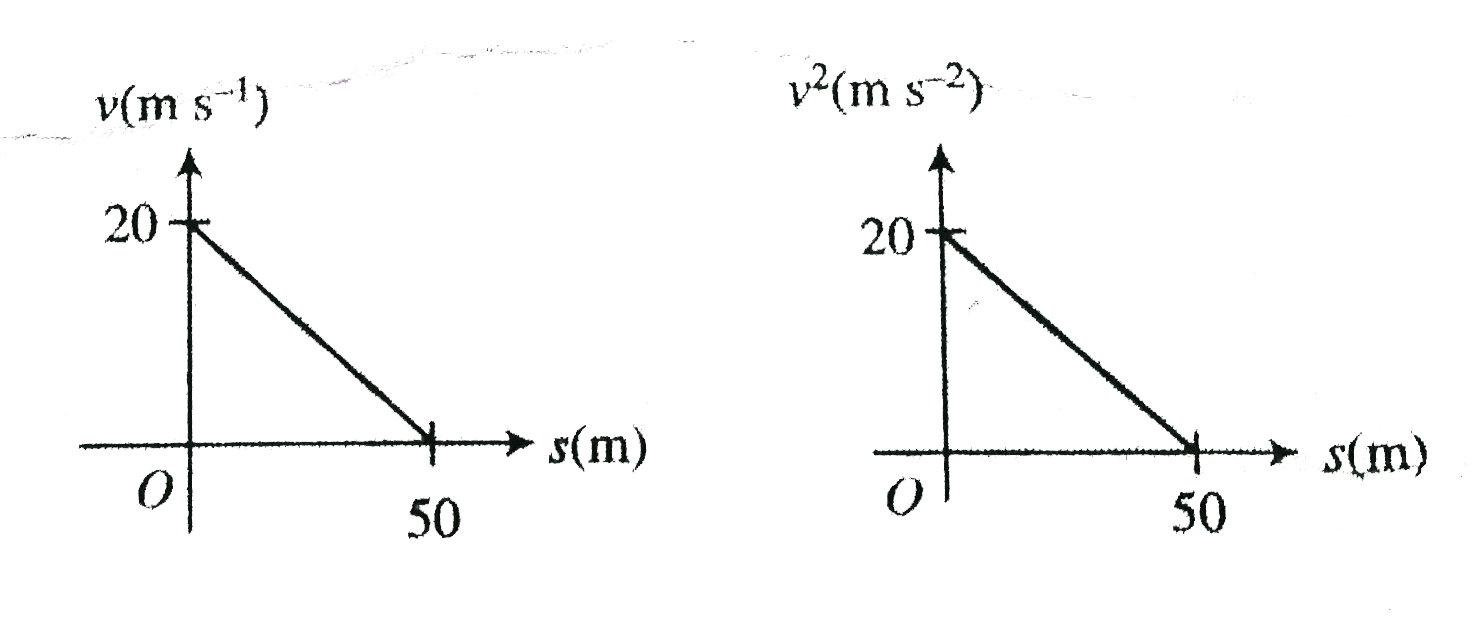 .
.
View SolutionThe velocity-displacement for a fer plane on a straight runway is shown in . Determine the speed and acceleration of the jet plane at `s=150 m`.
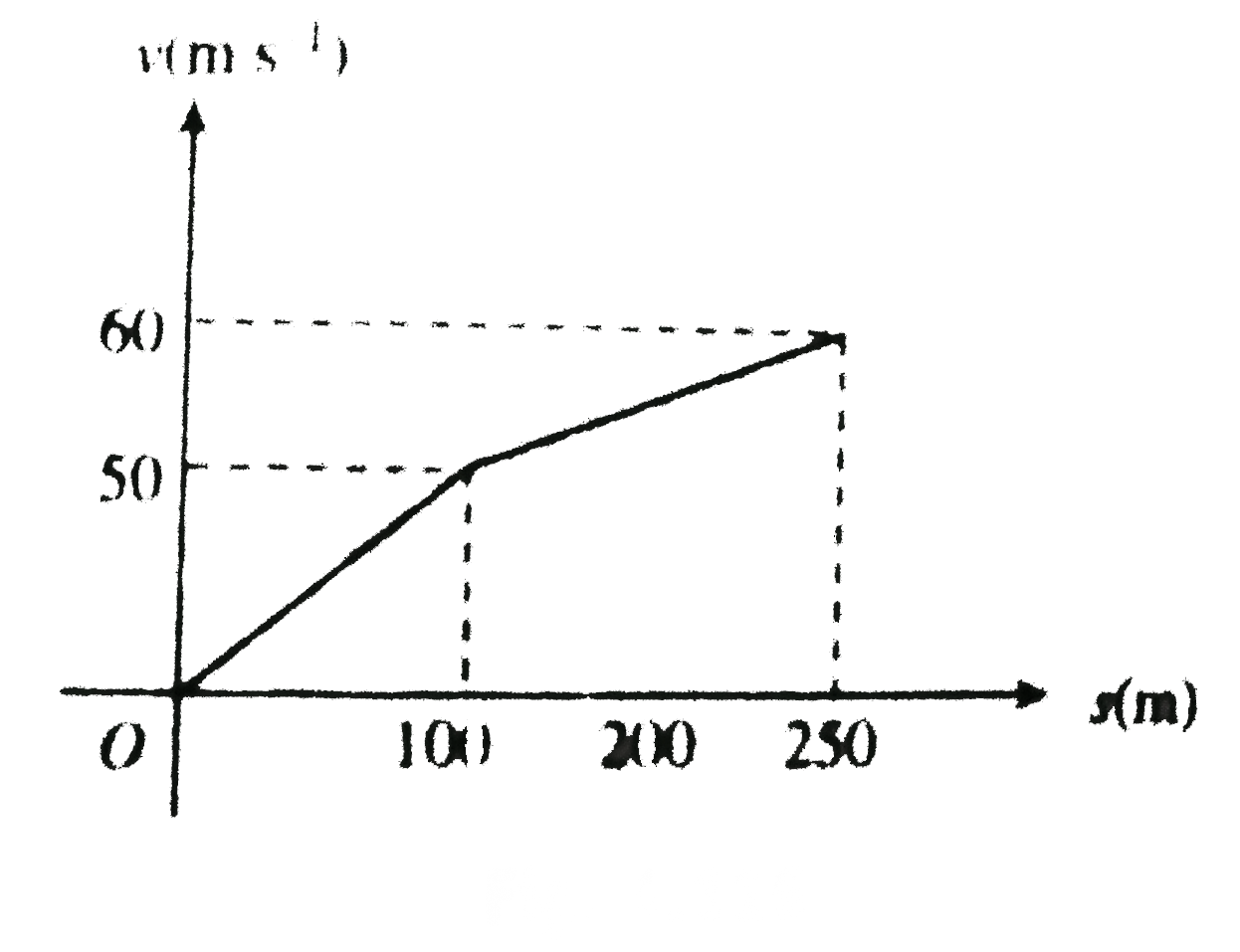 .
.
View SolutionReferring to `a-x` graph, find the velocity when thedisplacement of the particle is `100 m`. Assume intial velocity as zero.
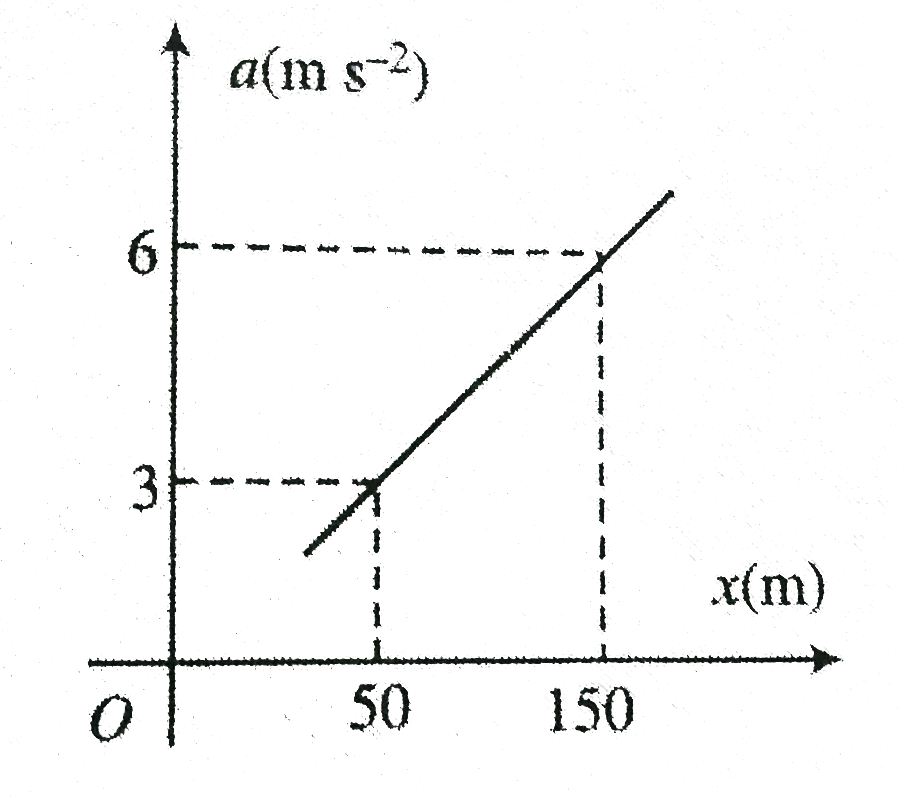 .
.
View SolutionReferrring to the `v^(2)-s` diagram of a particle, find the displacement of the particle durticle during the last two seconds.
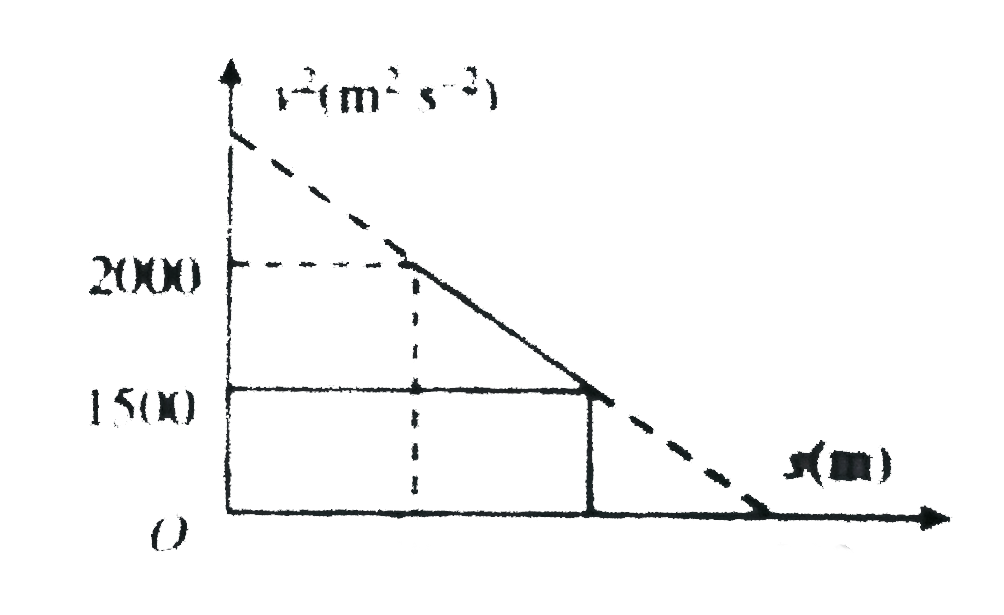 .
.
View Solution
Illustration questions and complete solutions for chapter KINEMATICS-1 of CENGAGE PHYSICS (HINGLISH) of Class 11